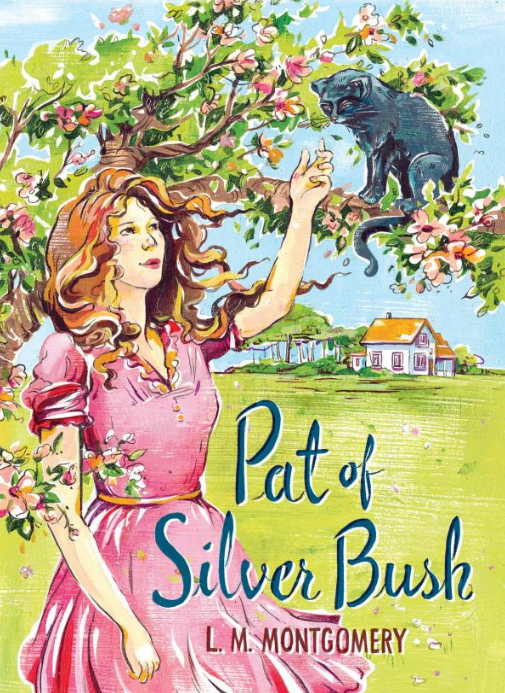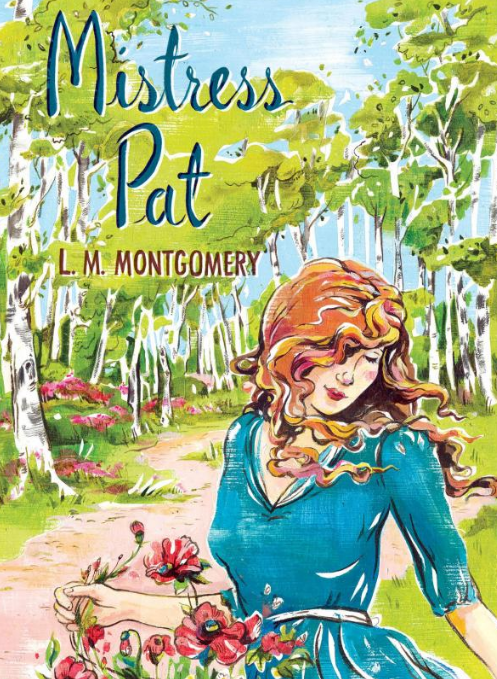Pat Gardiner of Silver Bush is a nice girl. She is seven years old when her story opens. She is obedient to her parents and to the housekeeper, Judy Plum. She is helpful, loving, and kind to animals. Her life is comfortable, but she hates change of any kind, and she has to struggle against loving her home, Silver Bush, more than she loves people. “‘Silver Bush isn’t her house . . it’s her religion,’ Uncle Brian had once said teasingly.”

Pat is a nice girl. Unfortunately, she also seems superfluous. Silver Bush was published in 1933, followed by Mistress Pat in 1935. The books have a strong flavor of an attempted reprise of Anne of Green Gables. However, nothing much really happens. Pat resists change with all her might while living in the midst of it, as we all do; births, deaths, marriages, goings away to school. Silver Bush covers her life from the age of seven to about eighteen. Mistress Pat covers the next eleven years. It would be easy to be friends with Pat, as long as you never said anything negative about Silver Bush, but she lacks the verve and imagination of Anne or the ambition and determination of Emily. “The only marked talent she had was for loving things very greatly and that did not help you much with Greek verbs and dates.”

Having recently read several of Montgomery’s works in a short period of time, the Pat books confirm some patterns I failed to notice 30 years ago when I was reading everything Montgomery I could get my hands on.
Lucy Maud Montgomery didn’t grow up in a traditional family. Her mother died when Maud was a small child and her father left her to be raised by relatives. It seems that, even when she finally tried to write a story about a girl living in a traditional family, she couldn’t quite manage it. Pat lives in a happy home with her mother, father, sisters and brothers. This is an unusually pleasant situation for a Montgomery heroine, but it doesn’t quite take solid form. The housekeeper, Judy Plum, vies with Pat for “main character.” Judy Plum has been with the household since Pat’s father was a child. She knows her place, but has quite a bit of influence over all the family members and appears to be the one who is actually raising Pat. Father moves around in the periphery of the action, mother is delicate and must constantly be sent to her room to rest. It takes several chapters before Montgomery clarifies which of the named residents of the household are Pat’s brothers and sisters. At crucial moments, we are told that Pat loves her father and mother, but we see very little interaction between her and either of them. We are told how close she is to one of her brothers, but we are told more than shown. Pat does eventually develop a relationship with her sister who is seven years younger than she. Her closest relationships are with Judy Plum and Silver Bush.
The only thing more tedious in Montgomery’s books than Emily’s string of beaus is Pat’s even longer string. I lost track of how many young men came courting to Silver Bush. I forget how many times Pat was engaged or on the verge. All the time, we know with whom she belongs and that it will all come right in the end. So end it already! Anne doesn’t want to acknowledge that she is in love with Gilbert. Why ruin a perfectly good friendship? Emily doesn’t want to acknowledge that she is in love with her childhood friend, a good friend, but just a friend. Oh, my! Pat doesn’t want to acknowledge that she’s in love with her childhood friend? Why is it so difficult for Montgomery to allow her heroines to understand what love is, to find happiness before old-maidness sets in, or to show them living in a mature marriage relationship?
One of Pat’s near engagements is to a widower who moves into the house next to Silver Bush. He is enough older than Pat that her family (Judy Plum especially) isn’t thrilled with the prospect. Reminiscent of Emily’s Dean Priest? It’s difficult to say for sure because Pat’s older beau isn’t given much of a personality. He seems more like one of Montgomery’s stock characters that she feels obligated to throw at the story for lack of anything better to fill it out.
Speaking of filler . . . if Judy Plum’s stories about all the neighborhood folk and memories of her younger days in Ireland, which advance the plot not at all, were removed, the meat in these two books would fit into one plump volume. Remove the completely unnecessary storytelling competition between Judy Plum and the hired man, Tillytuck, and it would become quite manageable. By the end of Mistress Pat, I was yearning for some true character development rather than caricatures and a string of the usual suspects.
I would caution that Judy Plum is not above telling some rather hair-raising stories. “Pat’s favourite one was a horrible tale of a murdered man who was found in pieces about the house . . . an arm in the garret . . . a head in the cellar . . . a hambone in a pot in the pantry. ‘It gives me such a lovely shudder, Judy.’” Some children might not enjoy the shudder as Pat does.
It can be difficult to tell for sure whether Judy Plum believes in the ghosts and witches whose stories she tells. She does send Pat and Jingle to ask a neighbor, Mrs. McClenahan, if she can help them find Jingle’s lost dog. Judy thinks it will be fun for the children to believe that Mrs. McClenahan is a witch, and Mrs. McClenahan joins in perpetuating that belief.
Pat’s best friend dies of the flu while the girls are in their early teens.
For some reason, there is a scene where Pat decides to emulate one of Judy Plum’s stories in which a princess used to dance naked in the moonlight every night of a full moon. Pat undresses and dances in the moonlight, thinking no one will see her, but her aunt happens upon the performance and is, of course, outraged. The aunt feels she must share the information with other family members and the incident is brought up periodically throughout Pat’s childhood.
It probably isn’t fair of me to be so hard on Pat. After all, she’s a perfectly nice girl. It’s just that by the time I finished both Pat books, I had the feeling that Montgomery must have spent “life after Anne” trying to recapture that first success without a clear idea of the reason for that success. Montgomery’s love of her character and of her craft ooze from Anne of Green Gables. Deliberate efforts to please a target audience and the need for further commercial success seep from many of her subsequent books.
You can find all our Montgomery reviews here.
One Comment
Comments are closed.